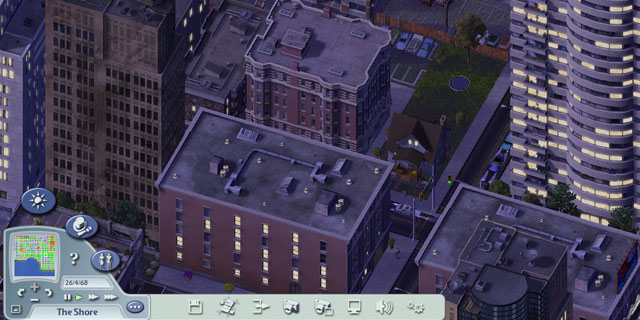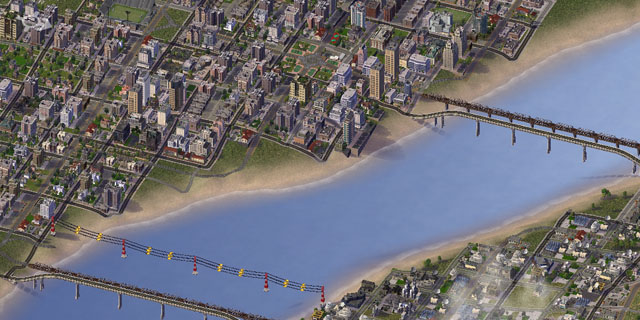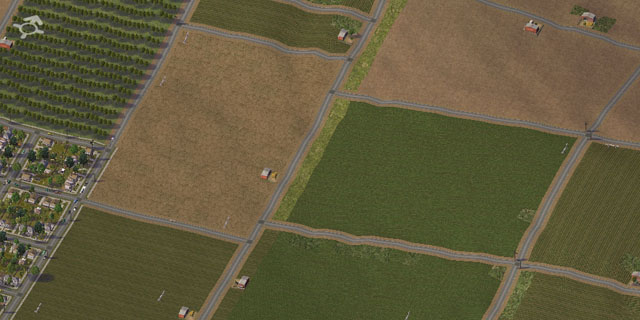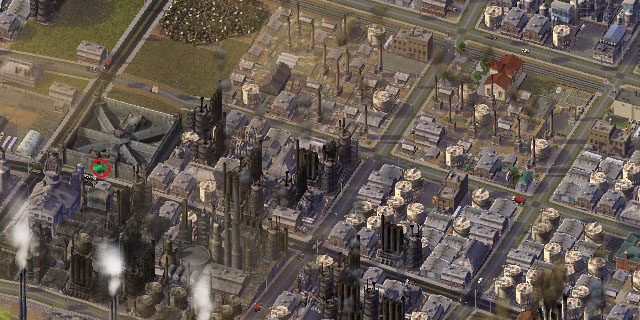
Call me a cynic, but the announcement of the new SimCity sequel left me cold. It’s not that it doesn’t have it share of good promises; it’s that most of them we have already seen before, with regions and simulation of every single person living in your city being already the flagship changes of SimCity 4. In a certain way, it’s not like I can blame them. SimCity 4 was such a step forward that I can’t help but think that it’s more SimCity than the original game. All those features, nuances and ideas of the older games became quirks in my mind after playing 4. They had all been replaced.
It’s not that 4 was better; it was just a simpler concept. Even though it had more rules and subsystems than 2000 or Classic, they were all more closely tied to the core, to the taxes and less to the amount of simoleons in the coffers. No longer could you build huge neighborhoods after saving for a couple years. You needed to build upward and do something to attract more business, be it better infrastructure or designing better parks. There was always something keeping you on your toes, a new problem that a smaller city didn’t have.

In fact, SimCity 4’s greatest achievement might just be its flow. At every stage of the game, there’s something to do, and those stages don’t come and go when you spend $50,000 in a new stadium or because you can finally replace your aging power plants on tax money alone. Rather, they slowly evolve, one building and zone at a time. The game constantly encourages you take care of the small nuances in play, while planning the next industrial district and balancing a brand new train network. It’s constantly moving the game state forward and keeping you interested at every point of it.
Every time I play SimCity 4, I seem to quickly fall into a contemplative state. Beyond the pollution maps, traffic jams and list of public ordinances, the game is surprisingly relaxing. You can spend hours and hours just watching your city slowly change, seeing your Sims go from one building to another and improving the city block by block. It would be unfair to call it a sedate game, but it really keeps you glued to the screen, and it does it without forcing any pressure on you.

Perhaps this state is further aided by the amazing symphonic jazz and New Age tracks that act as background to the game. Composed by Jerry Martin, who already wrote the music for SimCity 3000 and The Sims, it’s probably one of the best soundtracks I have ever heard in a game, standing neck-to-neck with established classics of my portable player such as Streets of Rage and Mega Man (and often getting even more play than those).
It’s more than the quality, too! Each song has a city-related narrative, from the construction of a new area of skyscrapers to the woes of a morning commute. Alternating between cheerful praises of a town’s night life to the power of nature when creating a new region, the soundtrack really elevates the mood in the game, and like the llama humor and your advisor’s quirks, it has become an undeniable part of the franchise.

While the game was notably hard to run on the day’s computers and it still likes to take a good chunk of your computer’s RAM, other than having to resort to software rendering to avoid slowdowns on modern hardware, there’s no reason not to give it a try. It can easily be found with the expansion for a really fair price. Are you ready to take the city’s keys?



















